- 한국어
- English
- 日本語
- 中文
- العربية
- Español
- Français
- Deutsch
- Pусский
- Tiếng Việt
- Indonesian
By Honorary Reporter Alice Hong from Canada
Photo = Alice Hong, Funday Korea Networks
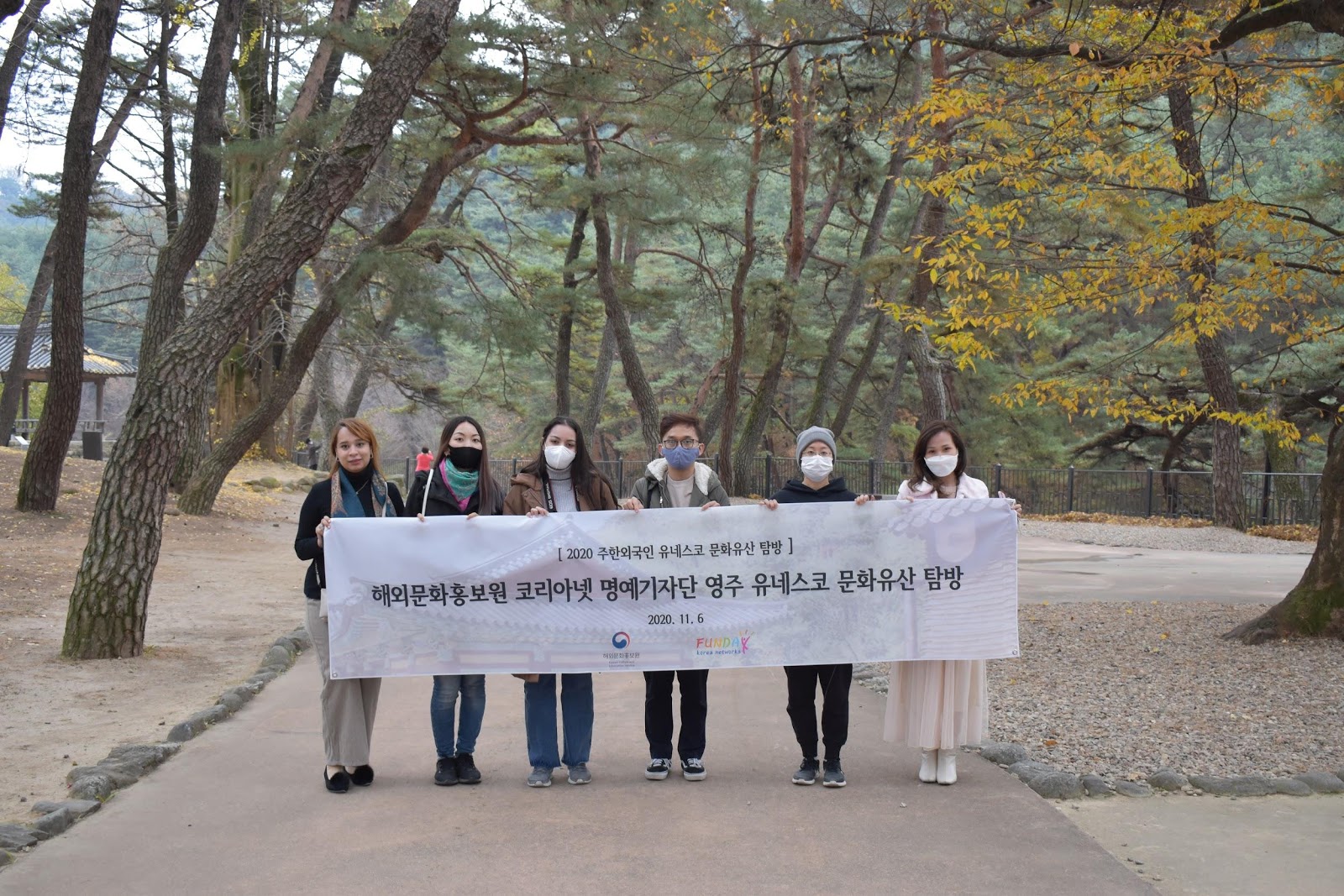
Group photo at Sosu Seowon (Funday Korea Networks)
On a cloudy but calm Friday morning, a handful of Honorary Reporters gathered at Exit 6 of Sports Complex Station in Seoul for a special event. We were chosen by Korea.net and Funday Networks to visit Yeongju, Gyeongsangbuk-do Province, a city known for apples, beef and ginseng. The objective was for the delegation to visit two UNESCO Cultural Heritage sites in one day. Luckily, I happened to be available on Nov. 6 to grab this opportunity, along with other reporters from Morocco, Egypt, Russia and Vietnam.
The bus ride from Seoul to Yeongju was quite long, a few hours of uninterrupted sitting, but arriving at our destination took my breath away. The Yeongju landscape features open space and nature and is very clean and pristine. It reminded me of Canada, where I grew up. Before we entered Buseoksa Temple, the first cultural heritage site we visited, we ate at a nearby restaurant bibimbap, a traditional rice dish with cooked vegetables and gochujang (hot red pepper paste), which adds kick to any meal.
After lunch, we met our tour guide Tony Kim, an old Korean man who spoke English well for someone who had never been to North America. He kept us engaged with his simple but noteworthy tales about Yeongju. He said one of the odd features of Buseoksa Temple is that the Buddha statue at the main hall faces east instead of south, to emphasize the idea that Buddha came from the west. The temple's rich architecture was amazing to see despite the weather.
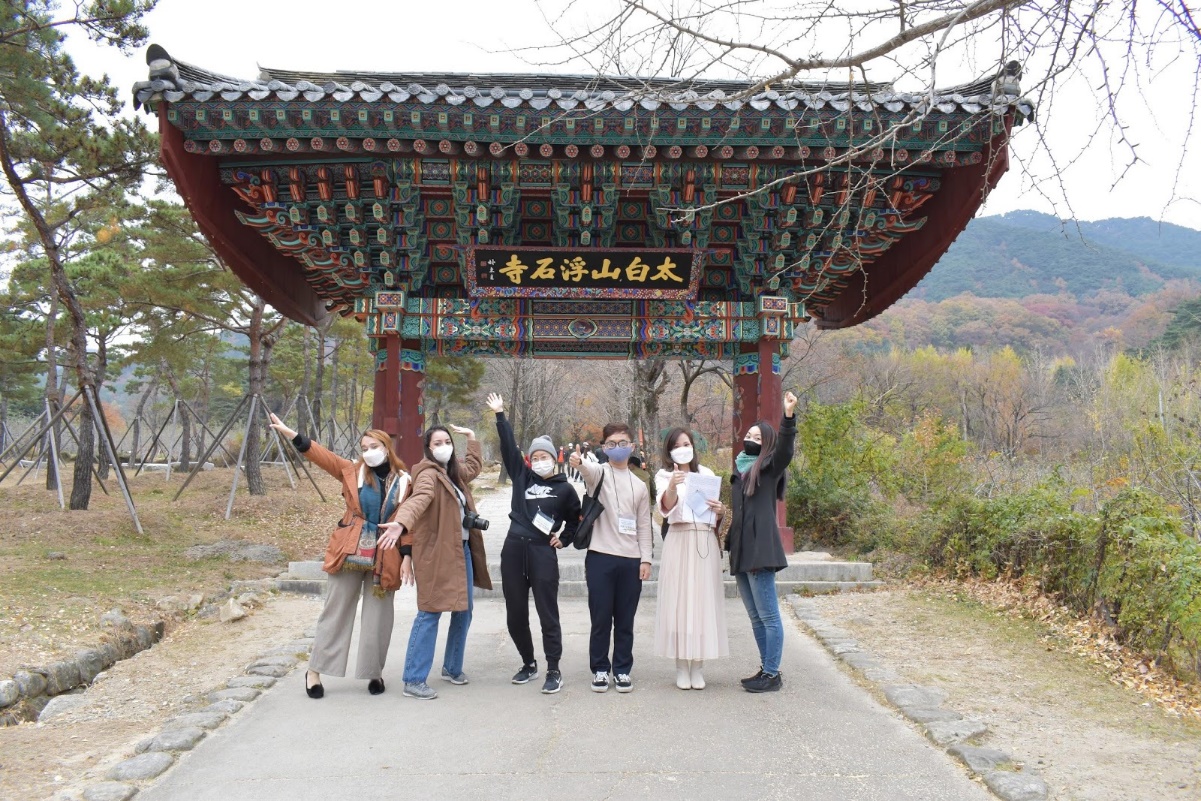
The Honorary Reporters pose for a photo at Cheonwangmun Gate. (Funday Korea Networks)
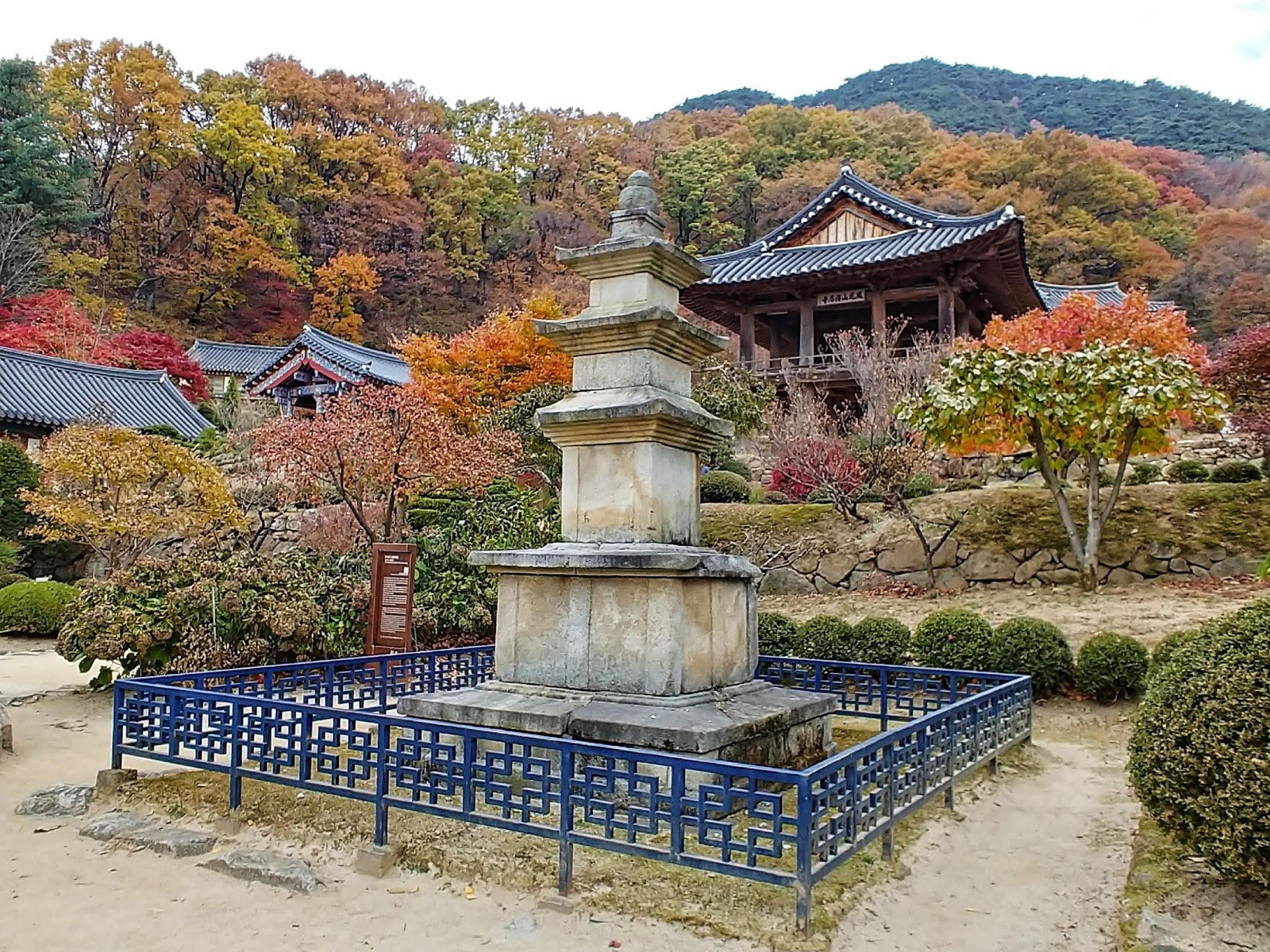
Three-story stone pagoda (Alice Hong)
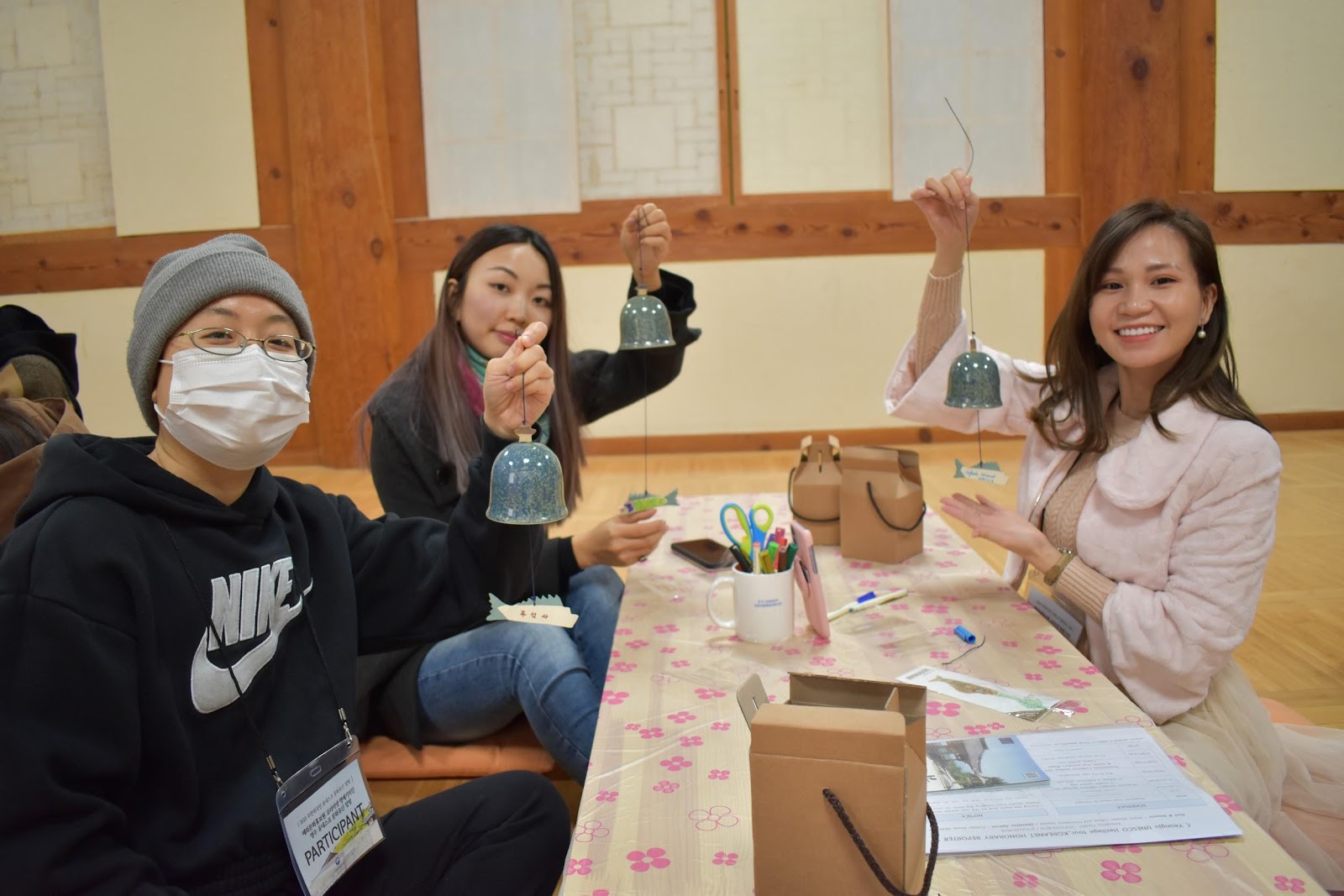
The Honorary Reporters attended a bell-making workshop at the temple. (Funday Korea Networks)
Next, we visited Sosu Seowon, the oldest Confucian academy on the Korean Peninsula and the second UNESCO-designated site on our trip. As I looked around, it became clear that Yeongju is rich in neo-Confucian and Buddhist history and culture. The small but elegant Hanok buildings here took me back to the time of the Joseon Dynasty, when scholars wrote in Chinese script called hanja. I felt privileged to visit Sosu Seowon, which is more than 350 years old.
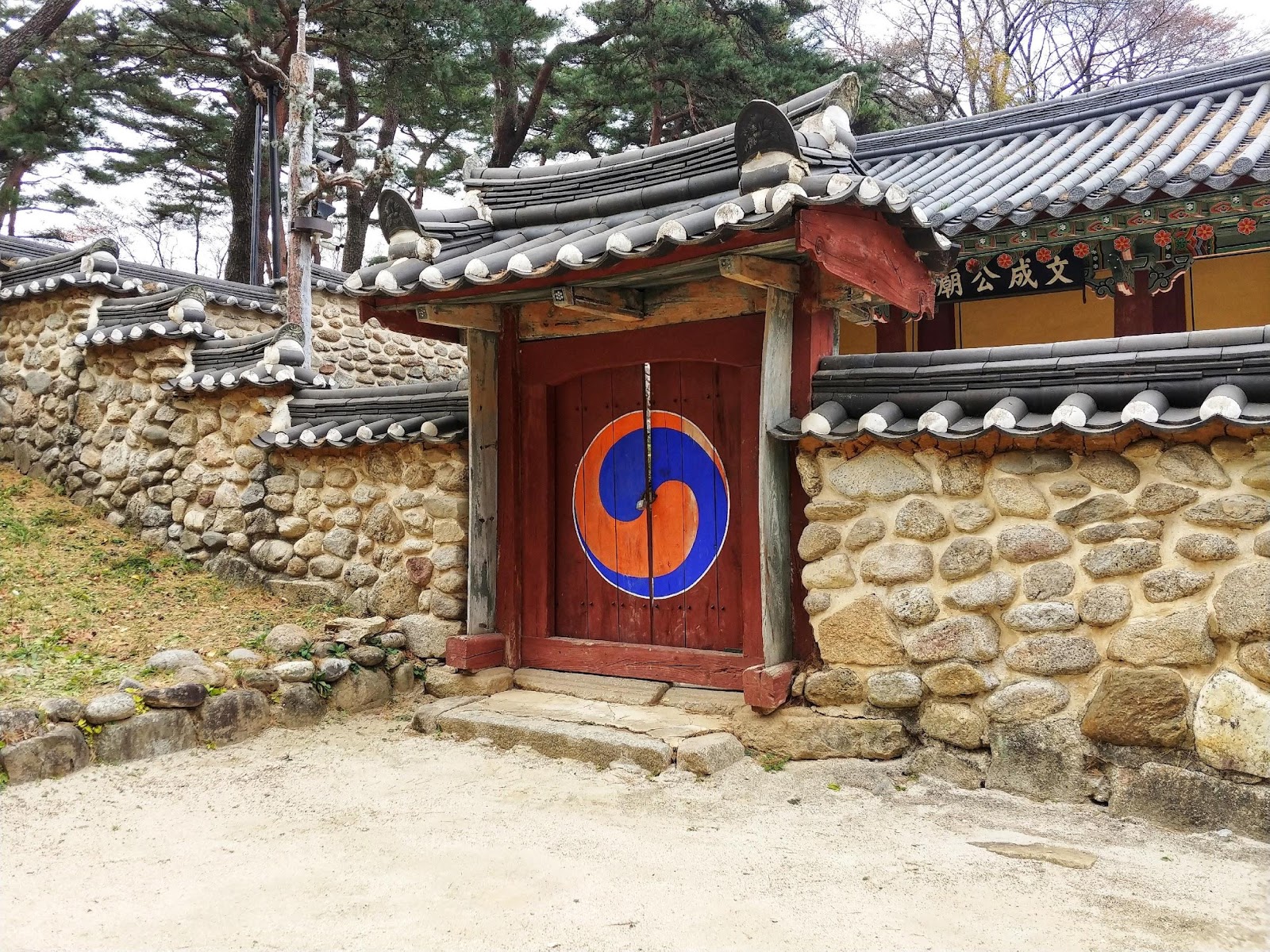
Gate with yin-yang design (Alice Hong)
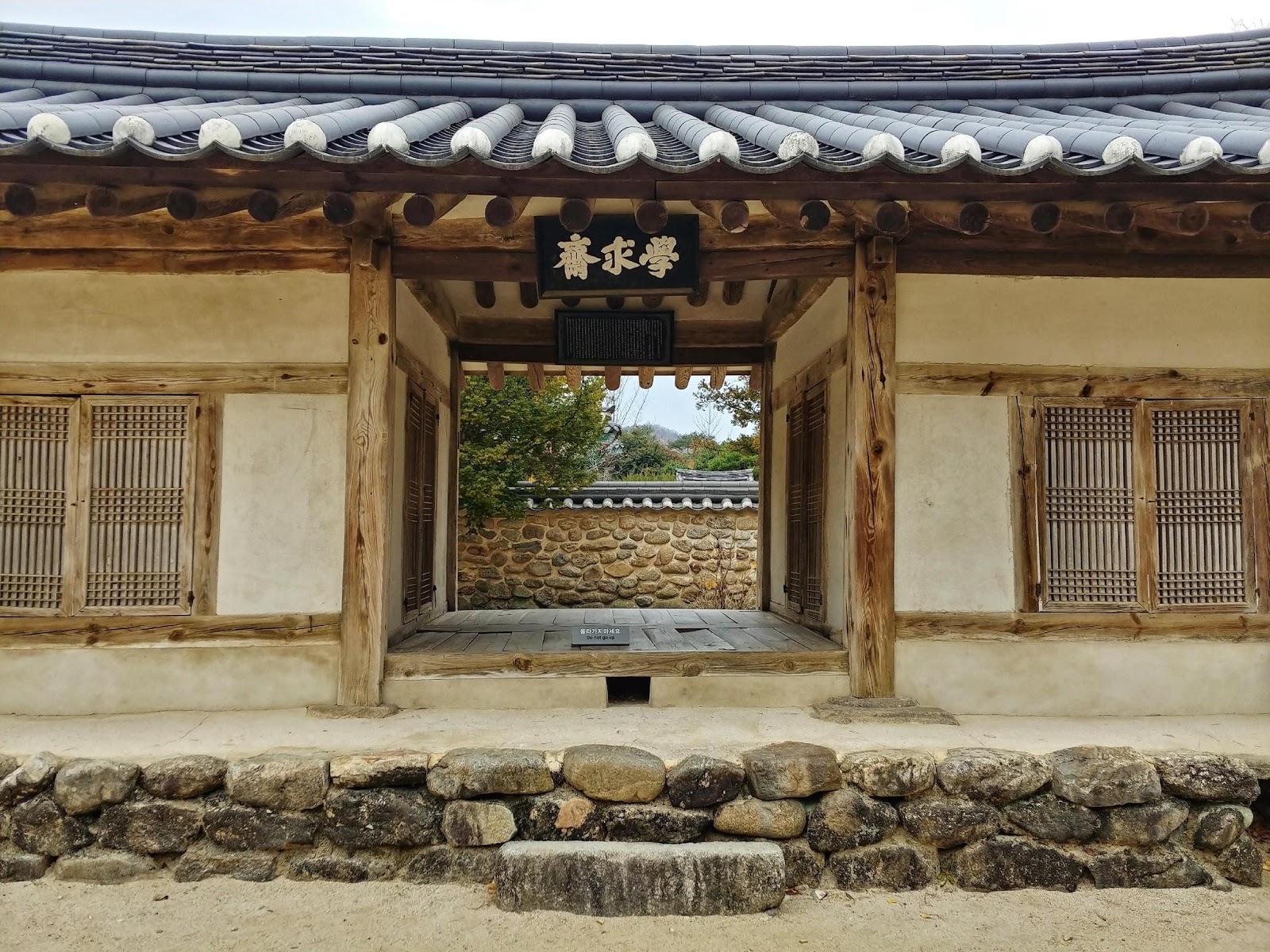
Hanok dormitory for scholars (Alice Hong)
For dinner, we received a feast featuring beef made in the area, and the big meal was great considering we spent many hours walking that day. Most of us wished we could've stayed longer in Yeongju since we were having such a great time. We wanted to hike on Sobaeksan Mountain, a famous landmark of the city. One reporter said that if he visits Yeongju again, he will go to an apple orchard to pick apples.
While Yeongju isn’t as glamorous as Busan or Jeju, it has a lot of hidden gems that makes it worth a visit. If space and healing are what you need, Yeongju is where you want to be. After spending a lot of time at home due to the coronavirus, I felt great getting some fresh air and eating delicious food with new friends in a city I'd never visited before.
enny0611@korea.kr
*This article is written by a Korea.net Honorary Reporter. Our group of Honorary Reporters are from all around the world, and they share with Korea.net their love and passion for all things Korean.